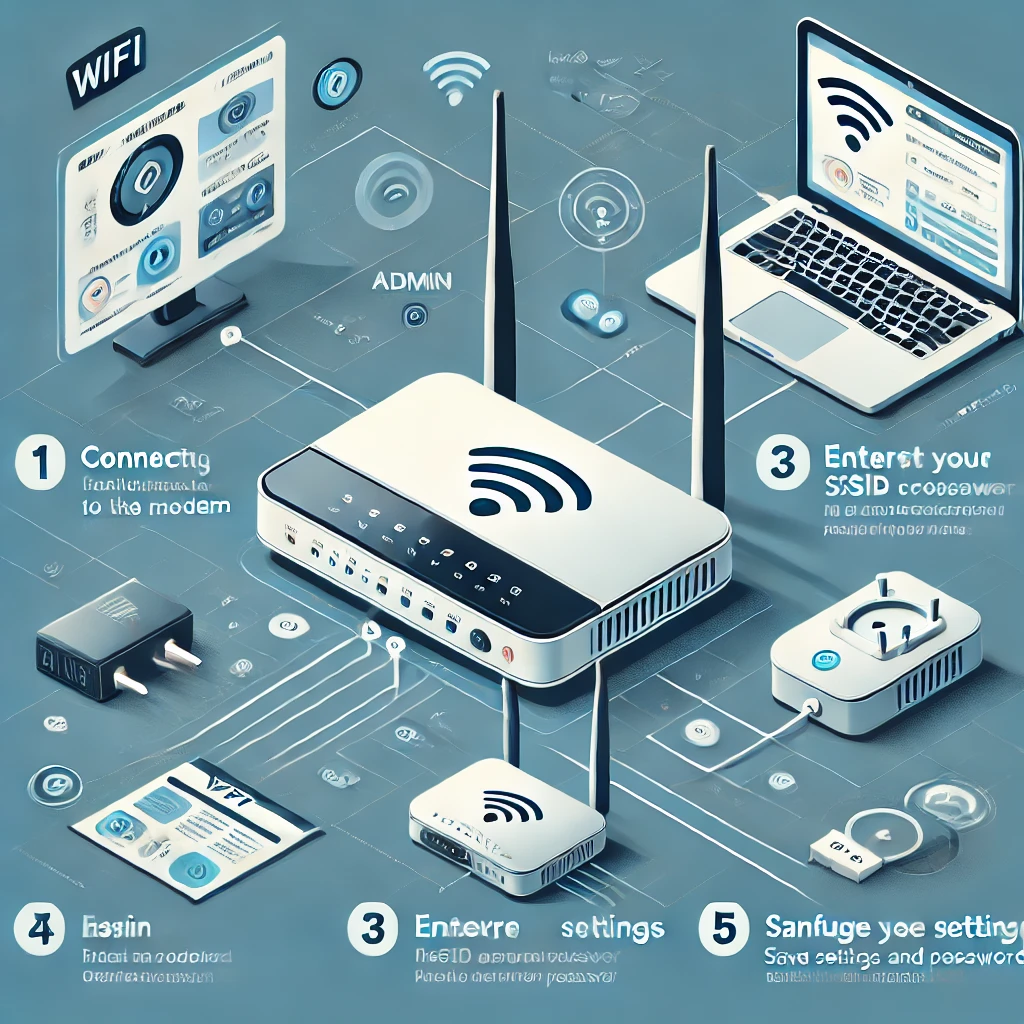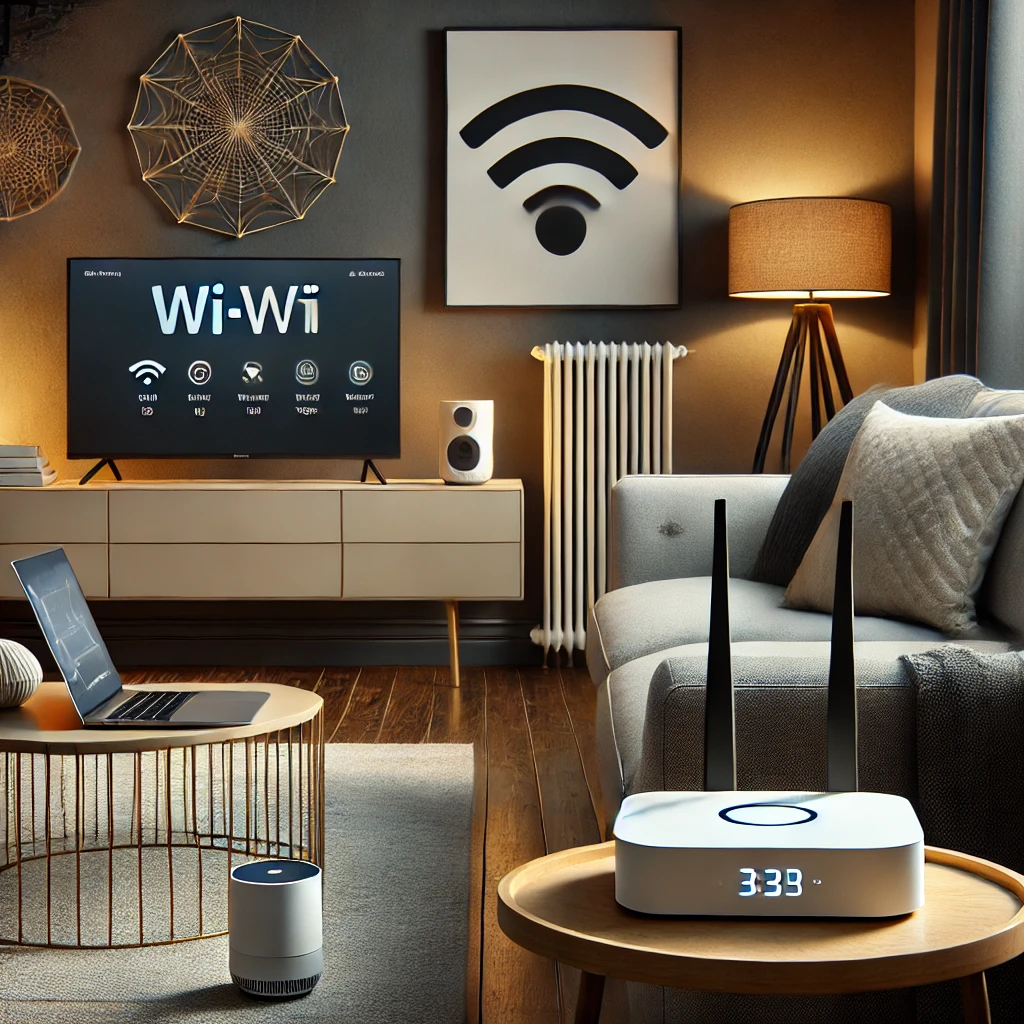How to Configure a WiFi Router : To configure a WiFi router, connect it to your modem and plug it into a power source. Access the router’s configuration interface by entering its IP address (e.g., 192.168.1.1) in a web browser. Log in with the default admin credentials, navigate to the Wireless Settings menu, and set your SSID (network name) and password. Save the changes and restart the router to activate your network.
Steps to Configure Your WiFi Router:
- Connect the router to the modem and power source using the provided cables.
- Open a web browser on a connected device and enter the router’s IP address (commonly 192.168.1.1 or 192.168.0.1).
- Log in using the default username and password (check the label on the router or user manual if unsure).
- Go to the Wireless Settings or Network Setup menu.
- Set up your SSID (network name) and choose a secure password (use WPA2 encryption for better security).
- Save your settings and reboot the router if prompted.
- Connect your devices to the new WiFi network using the credentials you set.
Tips for Better Configuration:
- Update the router firmware to the latest version for improved performance and security.
- Position the router centrally for optimal signal coverage.
- Change the default admin credentials to prevent unauthorized access.
FAQs for WiFi Router Configuration
Here’s content for frequently asked questions related to WiFi router configuration. These FAQs are designed to target common user queries and align with long-tail keywords:
1. How do I configure my WiFi router?
To configure your WiFi router, connect it to your modem and power it on. Access the router’s settings by entering its IP address (e.g., 192.168.1.1) into a web browser. Log in using the admin credentials, set up your SSID (WiFi name) and password, and save the changes to activate your network.
2. What is the default IP address for most routers?
The default IP address for most routers is either 192.168.1.1 or 192.168.0.1. You can find this information on the label on the back of the router or in its user manual.
3. How can I secure my WiFi network?
To secure your WiFi network, use WPA2 or WPA3 encryption and set a strong, unique password. Change the default admin credentials of your router, enable firewalls, and disable SSID broadcasting if you want extra privacy. Regularly update the router firmware for improved security.
4. What should I do if I forget my WiFi password?
If you forget your WiFi password, log in to your router’s settings using its IP address. Navigate to the Wireless Settings section, where you can view or reset your password. If this isn’t possible, you may need to reset your router to factory settings.
5. Why can’t I access my router’s settings?
If you can’t access your router settings, ensure your device is connected to the router (via WiFi or Ethernet). Double-check the IP address, clear your browser cache, or try a different browser. If the issue persists, restart or reset the router to factory settings.
6. How do I reset my router to factory settings?
To reset your router, locate the small reset button (usually at the back). Press and hold it for 10-30 seconds until the router restarts. This will erase all custom settings, including the WiFi password, so you’ll need to reconfigure it.
7. How do I update my router’s firmware?
Log in to your router’s settings via its IP address. Navigate to the Firmware Update or Administration section. Download the latest firmware from the manufacturer’s website if required, and upload it to the router. Follow the instructions carefully to avoid interruptions.
8. How can I improve my WiFi signal strength?
To improve WiFi signal strength, position your router centrally in your home, away from walls and obstructions. Use a dual-band or mesh router for better coverage. Additionally, reduce interference by keeping the router away from devices like microwaves and cordless phones.
9. Can I use the same WiFi name (SSID) for 2.4GHz and 5GHz bands?
Yes, you can use the same SSID for both 2.4GHz and 5GHz bands. However, giving them unique names can help you identify and connect to the appropriate band for your device needs (e.g., 5GHz for faster speeds, 2.4GHz for better range).
10. How do I set up a guest WiFi network?
Log in to your router’s settings and find the Guest Network section. Enable the guest network option, set a unique SSID, and add a strong password. You can also limit bandwidth or set expiration times for added security.


